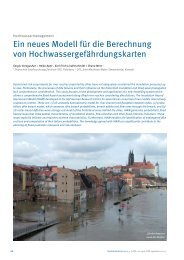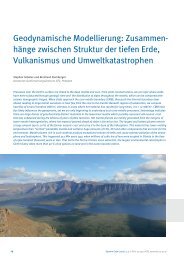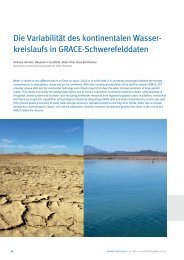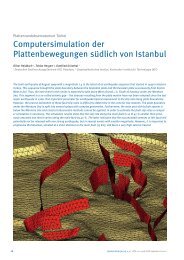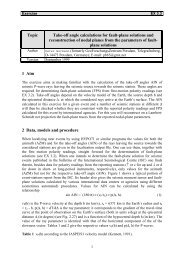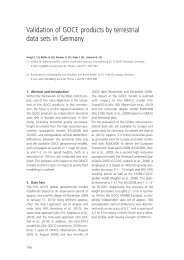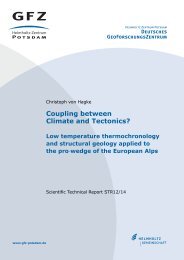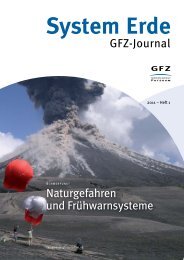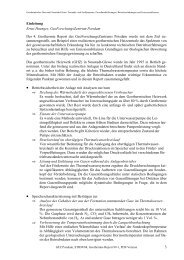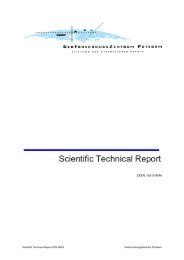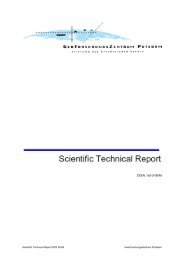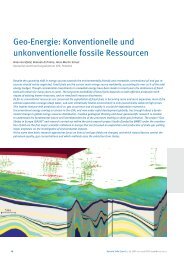2 Seismic Wave Propagation and Earth models
2 Seismic Wave Propagation and Earth models
2 Seismic Wave Propagation and Earth models
You also want an ePaper? Increase the reach of your titles
YUMPU automatically turns print PDFs into web optimized ePapers that Google loves.
2. <strong>Seismic</strong> <strong>Wave</strong> <strong>Propagation</strong> <strong>and</strong> <strong>Earth</strong> <strong>models</strong><br />
arrival is called coda. Coda arrivals are produced by scattering, that is, the wavefield’s<br />
interaction with small-scale heterogeneities. Heterogeneity at different length scales is present<br />
almost universally inside the <strong>Earth</strong>. <strong>Seismic</strong> coda waves can be used to infer stochastic<br />
properties of the medium, i.e., scale amplitude of the average heterogeneities <strong>and</strong> to estimate<br />
coda Qc which is particularly needed for correcting source spectra prior to deriving spectral<br />
source parameters from records of local events (see exercise EX 3.4).<br />
Fig. 2.37 Three-component seismogram of a local, 100 km deep earthquake recorded at a<br />
portable station on the active volcano Lascar in northern Chile. The P-wave arrival is<br />
followed by coda waves produced by heterogeneous structure in the vicinity of the volcano<br />
(courtesy of B. Schurr, 2001).<br />
2.6 <strong>Seismic</strong> phases <strong>and</strong> travel times in the real <strong>Earth</strong><br />
The basic types of horizontally propagating seismic surface waves (Rayleigh waves, Love<br />
waves, <strong>and</strong> their higher modes; see 2.3) remain more or less unchanged with growing<br />
distance. Surface waves, however, do not form seismic phases (wavelets) with well-defined<br />
onsets <strong>and</strong> duration but rather dispersed wave trains. Due to the dispersion their duration<br />
increases with distance. Occasionally, surface wave trains of relatively high frequencies, as<br />
generated by shallow local events, may additionally be prolonged significantly due to lateral<br />
reverberations when propagating through strong lateral velocity contrasts in the crust (see Fig.<br />
2.38). This phenomenon was used by Meier et al. (1997) to establish a tomography with<br />
reflected surface waves.<br />
In contrast, seismic body waves, which propagate three-dimensionally, are more strongly<br />
affected then surface waves by refraction, reflection <strong>and</strong> mode conversion at the main<br />
impedance contrasts in the radial direction of the <strong>Earth</strong>. This gives rise, with growing<br />
distance, to the appearance of more <strong>and</strong> more secondary seismic body-wave phases following<br />
the direct P- <strong>and</strong> S-wave arrivals in seismic records. And since body waves show no<br />
dispersion in the considered frequency range below a few Hz these phases can usually be well<br />
observed <strong>and</strong> discriminated from each other as long as their travel-time curves do not overlap.<br />
42



